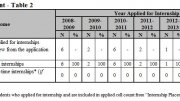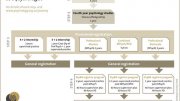 Mental toughness has been described as one of the most important characteristics of success in athletic endeavors. However, defining mental toughness is a bit more difficult. One of the first definitions came from James Loehr in his classic book on mental toughness.
Mental toughness has been described as one of the most important characteristics of success in athletic endeavors. However, defining mental toughness is a bit more difficult. One of the first definitions came from James Loehr in his classic book on mental toughness.
He described it as a psychological edge that has the following seven dimensions: self-confidence, attention control, minimizing negative energy, increasing positive energy, maintaining motivation levels, attitude control, and visual and imagery control.
Loehr’s work was unique and it led to many athletes trying to improve on those seven dimensions. Meanwhile, other researchers attempted to determine whether those were actually the correct dimensions. A long literature has continued adding or subtracting dimensions to the model of mental toughness (I have seen models with three to fourteen different dimensions; in academics these disputes can play out like the Wild West until one model becomes law). Furthermore, no one has yet determined which of those factors are most important to sports performance.
Mental Toughness in the Non-Athletic World
Recent research has been conducted on one of the models to determine whether athletes and non-athletes differ on mental toughness.3 It is an important question as one of the many reasons we have kids participate in sports is that we believe it will give them more mental toughness that they can apply in other areas. Furthermore, mental toughness has mostly been tested in the sporting area. Thus, do the same dimensions apply to mental toughness in other areas (e.g., the business world)?
The researchers asked almost 1, 900 adult athletes and non-athletes questions related to mental toughness. The non-athletes had never been involved in sports training or competition. The sample consisted of a balance of men and women and represented 34 different types of sports (team and individual). All the athletes were actively involved in competitive training.
 The researchers had two questions:
The researchers had two questions:
- Does the structure of mental toughness stay the same for athletes and non-athletes (i.e., is it made up of the same components)?
- Is the level the same for the two groups (i.e., does one group have more mental toughness than the other)?
For the first question, the researchers found that athletes and non-athletes did have similar components that make up mental toughness. That is, there did not seem to be any differences in how mental toughness was defined. These components were:
- Hope (I might rename this factor as it seems like it relates to the knowledge that one can handle him- or herself in tough situations; example question: I can think of many ways to get out of a jam)
- Optimism (example question: In uncertain times, I usually expect the best)
- Resilience (example question: I do not dwell on things that I can’t do anything about)
- Perseverance (example question: I am often so determined that I continue working long after other people have given up)
Perseverance and hope (belief in the ability to get out of trouble) seemed to be the most important factors in determining a person’s mental toughness.
Source: breakingmuscle.com
You might also like:



|
Mental Toughness: For Peak Performance, Leadership Development, and Success: How to Maximize Focus, Motivation, Confidence, Self-Discipline, Willpower, and Mind Power in Sports, Business, and Health eBooks (Personal Potential Books) |




















I agree, have to be Tiger Woods...